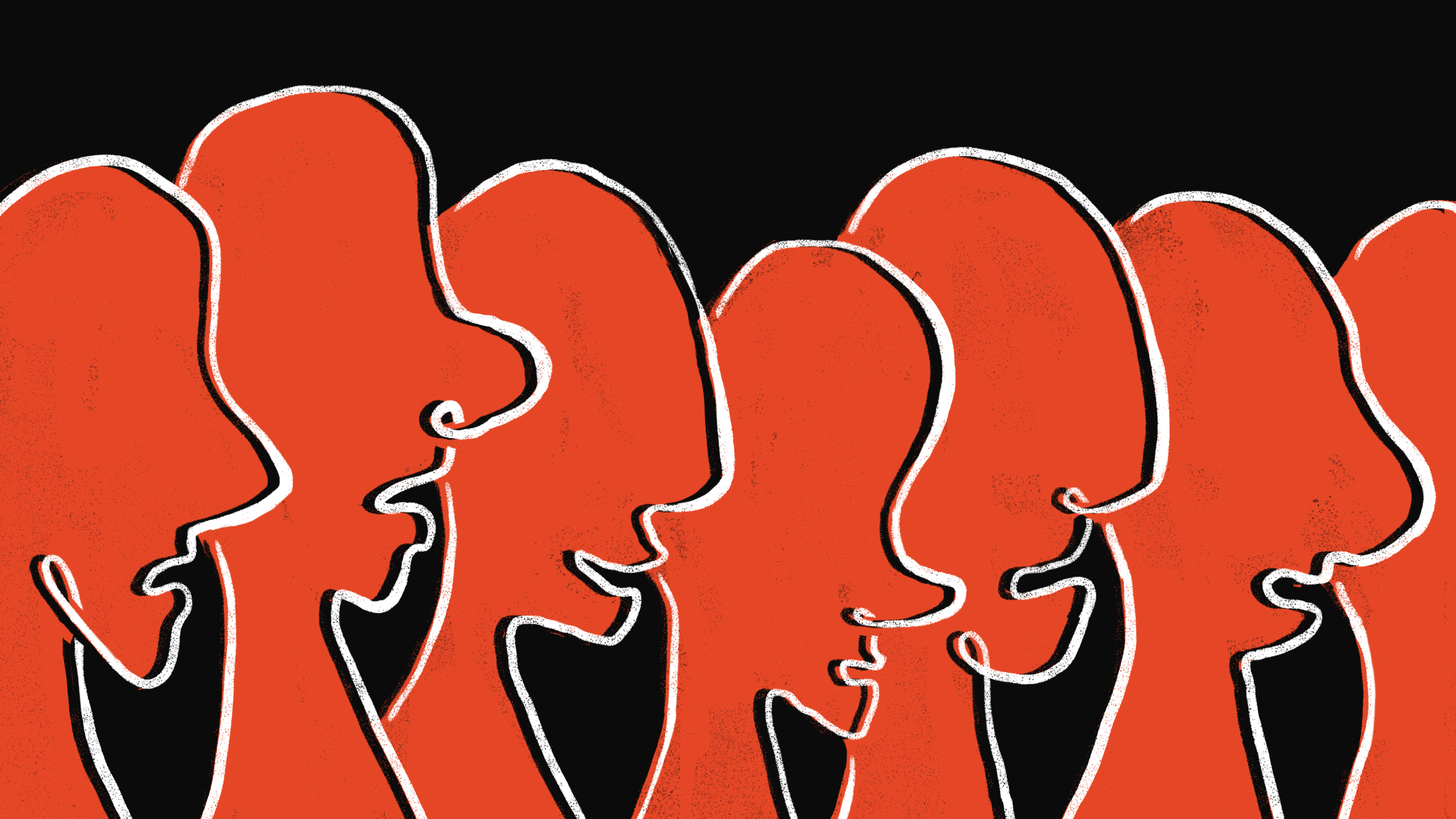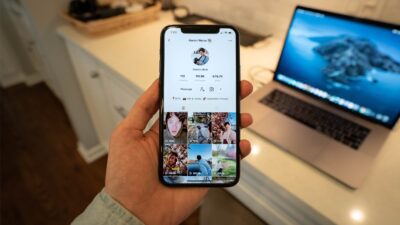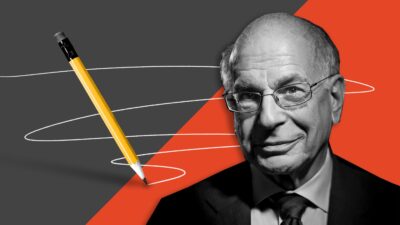Sydney Business Insights

The power of followership
Professor Melissa Carsten studies what most of us are – followers. There can be no leaders without followers, so we ask her “what makes a good follower?”

Professor Carsten has a PhD in Organisational Psychology from Claremont Graduate University. She has published widely in the field of organisational behaviour and human resources. Her research focuses on leadership and followership in organisations and the role that implicit followership theories play in leader-follower interactions.
Shownotes
Melissa Carsten, Professor of Management, Winthrop University
Melissa Carsten’s followership articles
Exploring social constructions of followership: A qualitative study
Followership theory: A review and research agenda
Ethical Followership: An Examination of Followership Beliefs and Crimes of Obedience
Followership: What is it and why do people follow?
Donald Trump crowdsources ideas and strategy
Forget focus groups, Donald Trump crowdsources strategy for 2nd debate
SBI archives
Extended interview with Commodore Chris Smallhorn
Lieutenant General David Morrison
Message regarding unacceptable behaviour in the Australian Army
General David Morrison’s tumultuous 12 months
Australian of the Year citation
Other media sources
Reed Hastings, Netflix co-founder
An inside look at Google – working at Google
The value of values at Atlassian
Credits
Producer: Jacquelyn Hole
Sound Editor: Megan Wedge
Thank you to bbc.co.uk – copyright 2018 BBC for some of the additional sounds in this podcast.
Follow the show on Apple Podcasts, Spotify, Overcast, Google Podcasts, Pocket Casts or wherever you get your podcasts. You can follow Sydney Business Insights on Flipboard, LinkedIn, Twitter and WeChat to keep updated with our latest insights.
Sydney Business Insights is a University of Sydney Business School initiative aiming to provide the business community and public, including our students, alumni and partners with a deeper understanding of major issues and trends around the future of business.
Share
We believe in open and honest access to knowledge. We use a Creative Commons Attribution NoDerivatives licence for our articles and podcasts, so you can republish them for free, online or in print.
Transcript
Sandra: In 2013 the Australian Army was rocked by a sex scandal. It was revealed that dozens of its male members were involved in the distribution of hundreds of explicit emails denigrating women, including their fellow service women. The then Chief of Army, Lieutenant General David Morrison, responded with a fierce speech of such power it made headlines around the world.
General Morrison (file audio): Those who think that it is okay to behave in a way that demeans or exploits their colleagues have no place in this army. On all operations, female soldiers and officers have proven themselves worthy of the best traditions of the Australian Army. They are vital to us maintaining our capability now and into the future. If that does not suit you, then get out.
Sandra: Talking directly down the barrel of the camera and delivered with what the Sydney Morning Herald described as a steely death stare, Morrison's final words left no doubt how he would exercise his authority in the interests of the organisation he led.
General Morrison (file audio): I will be ruthless in ridding the army of people who cannot live up to its values. And I need every one of you to support me in achieving this.
Sandra: At that moment, with the eyes of the nation upon him, General Morrison averted the public crisis of confidence in the army. The number of women enlisting in the army began to rise and in 2006 Lieutenant General David Morrison was named Australian of the Year in recognition of his commitment to gender equality and diversity in the Australian Defence Forces. This sounds like a story about leadership, but it's actually not. Determined as he was, Lieutenant General Morrison recognised he could not effect systemic cultural change alone.
General Morrison (file audio): I need every one of you to support me in achieving this.
Sandra: This is a story about followership. But both public attention and the academic studies are almost entirely focused around the actions of the boss. A few years after the events at the start of this podcast, I was able to talk directly with.
David Morrison: David Morrison, former Chief of Army. Now pensioner.
Sandra: I asked him how he saw the relative importance of leaders setting the direction verses the contribution of followers.
David Morrison: You're right to say look, in a hierarchical organisation like an army you can determine and lead from the top. That's true. But meaningful change has to be from the bottom up. Not from the top down. And a lot of effort that was made inside the army was to work at all levels of our hierarchical organisation to convince influential men and women at those levels that this was the right step forward. And I think we were largely successful in that regard.
Sandra: Most societies and businesses invest a lot of resources into leadership. Individuals study how to become an effective leader. Organisations hand pick and train up future leaders. Off the top of our heads, each of us could probably name a handful of people who we admire for their leadership qualities. We watch movies about leaders - think Winston Churchill and Margaret Thatcher. We read books about Steve Jobs and Richard Branson. But followership - who trains for that position? Where's the kudos for being a great follower? Today we are talking with an expert who studies what most of us are - followers. What does it take to be a great follower? Can we learn followership? And is it possible, or even desirable, for followers to lead from below?
Melissa: We can look at followership as a process that created the effectiveness and the rise to power of Donald Trump. My name is Melissa Carston, and I am a professor of a management at Winthrop University in South Carolina.
Intro: From the University of Sydney Business School, this is Sydney Business Insights. The podcast that explores the future of business.
Sandra: Welcome Professor Melissa Carson, to our Sydney Business Insights Studio.
Melissa: I am very happy to be here. Thank you so much for the invitation, this is amazing.
Sandra: The topic you've come to focus on and contribute to is this emerging scholarship around followership. And you've said your motivation was to turn the camera away from the leader and instead focus the lens on everybody else.
Melissa: I couldn't classify myself as a leadership researcher with a focus on followers. So I don't think that leadership and followership are two distinct and different things. I don't think that you can really study one without studying the other. But when I was in graduate school, as I was moving further into this field and really immersing myself in the literature and the theory that has accumulated over hundred and twenty years on leadership, I started to ask where followers were in this equation. And the question that really drove me was, "Can we truly understand leadership and leadership processes if we don't understand followers?" And the thing that I found myself asking over and over again is "where's the literature on followers, who are these people? How do they act with leaders? How do they contribute to or in some cases detract from the leadership process? And how do they contribute to important outcomes and organisations?" And I found no answers unfortunately. And that really drove me into studying this field.
Sandra: This has also been a very timely research given what what's going on right now in the US. And you illustrate the power of followers using the election of Donald Trump to the presidency of the US. Your starting point is that Trump is not by anyone's definition a great leader.
Melissa: Yeah.
Sandra: So how did he get elected to arguably the most powerful leadership role in the free world.
Melissa: This is a really great question, and one that intrigues me quite a bit. I also think it's a really good example of the power of followership. So if we look at Trump from a leader centric perspective which is the perspective that has dominated scholarly work on leadership, he does not fit the mould. His rhetoric is demeaning and divisive. He has been identified by the press as not really being that intelligent. He has no experience or expertise in the political realm and one could argue that even his experience in the private world has a lot of flaws. He should not have rose to power. There is no way that he should have accumulated the amount of support that he did in order to win that election. If we look at it from the follower perspective, it starts to make a little bit more sense. He was speaking to a group of followers that were experiencing emotional distress, that were extremely frustrated with the state of affairs in the United States. That were frustrated with politicians and the political process. And nobody was talking about that until Donald Trump came along. There's a really good quote in the leadership literature that says we are attracted to leaders that say publicly what we feel privately.
Donald Trump (file audio): "...calling for a total and complete shutdown of Muslims entering the United States until our country's representatives can figure out what the hell is going on. We have no choice"
Melissa: And so the argument would be then that Trump was able to articulate the things that thousands, hundreds of thousands of Americans wanted to articulate, but couldn't. Or didn't. Or felt not comfortable doing so. And those followers empowered him. So part of this theory around charismatic leadership is that followers create charisma. Charisma isn't something that a leader has or doesn't have, it's nothing about their own personal qualities or characteristics. But we as followers attribute charisma to people that we identify with, that we agree with.
Sandra: So then what is a leader? And what is a follower in turn?
Melissa: Leadership, I think, is a process and followership is a process. Leadership involves leaders and followers working together in a specific context, but the outcomes are always around the leader. What the leader does for others. Followership as a similar process except we look at the outcomes that followers bring to leaders or to productivity and other outcomes for organisations. In this particular case we can look at followership as a process that created the effectiveness and rise to power of Donald Trump. So Trump admittedly said that he would float ideas through Twitter, for example, and see how followers would react.
Donald Trump (file audio): Now let me ask you, should I keep the Twitter going or not? Keep it going? I think so. I think so.
Melissa: And if he got enough very positive reactions from followers, he would start to include that in his stump speeches as he was going out and speaking to audiences. He would put more gravitas behind those statements. Statements that were not endorsed by followers, he would back off from. So he was letting followers dictate what his message was. He was letting followers create his leadership. And so that is a really powerful example of followers really helping someone rise to power.
Sandra: Professor Carston's investigation of the leadership-followership dynamic led her to identify two main follower types. The first she labels as the passive follower. And then there are those she describes as having a co-production orientation.
Melissa: Yeah. So the research that we've done primarily looks at how individuals define the follower role. What beliefs they have about how followers should act with leaders. And we've actually found a number of different dimensions but the two that stand out most strikingly are that of what we call passive followers, which really kind of resonates within the traditional definition of followership. That these individuals are passive and deferent and blindly obedient. It's the negative connotation that everybody uses when they say I'm never going to be a follower. But when you look at people inside organizations and ask them what do you believe as important about the follower role. There's a huge proportion of people that say I'm a bad follower because I want my voice to be heard and I want to engage with leaders. I want to interact with them. I want to voice ideas and share information that I think will be pivotal in their ability to make decisions. And that to them doesn't fit the traditional definition of followership in all of its negative connotation. Instead they see it as a very positive and powerful thing that helps leaders be more effective. And that is followership. It's not followership the way that we have traditionally defined it. It doesn't have the negative connotation. It's very much more engaged and proactive but it's still a form of followership. So those individuals that really see the followership as a process of co-production, that are more engaged, they voice more regularly. They constructively push back against their leaders when they think their leaders might be headed in a bad direction or making a bad decision. They share information. They don't just present problems, they present solutions to those problems. And what we find is that leaders typically see those followers as more supportive. More engaged, more motivating. They want to work with those kinds of followers because they get more out of the leadership process when they have people engaging with them.
Sandra: I have to say that when you round out those descriptions, a passive disposition seems like an inferior type of follower. Are there any positive things to say about passive followers?
Melissa: There are yes. They're really good team players. They want to support the leader and what the leader is doing. They feel as though their job is truly to help leaders be successful, in the leader’s ideas and the strategy that the leader is pushing forward. They're not going to challenge that strategy necessarily. They're not going to share information or ideas that might make the leader think differently about the direction they're going. But there are some contexts in which more passive followership is still probably the most effective type of followership. So the example that I typically use is if you're running a nuclear power plant you have to have a very controlled and structured and strict environment. And you don't want a follower saying well you know what happens if I press this button, or what information can I pull out to say that my job should be done differently. To some extent you want them following directions.
Sandra: In this follower-leader dynamic, you allow that followers have a strong voice they used to speak upward to the boss or the leader. But if you were able to whisper follower's ear, would you caution them to use this upward voice judiciously?
Melissa: So there are greater consequences if that follower oversteps their bounds, or even is perceived as insubordinate. So we're looking at it within that power dynamic which is a little bit different. So the behaviours that we're interested in then are, for example, how do followers identify problems, present interesting solutions, share information or ideas that perhaps the leader has not thought of. And how do they pick their battles in doing nothing. You can't fight every battle. You can't share an idea every time you have one or pushback on the leader every time you disagree with them because to some extent that leaders are going to stop listening to you. You have to pick your battles. You have to say this issue is more important than that issue so I'm going to talk about this issue. You also have to choose the right timing. You have to choose the right tone of voice. You have to choose the right way to communicate with a leader. These are things that from a leadership perspective we have not really studied, because leaders can just communicate what they want with followers without any kind of negative ramifications. Followers can't do that easily with leaders because of that power dynamic.
Sandra: Can you give me some examples of workplaces where these different characteristics have been both highly effective for the organizations, have worked really well for the organisation, and work the relationship dynamic has been a bit let's say detrimental.
Melissa: Yes. Highly bureaucratic environments typically do not endorse proactive or co-production type of followership. Highly bureaucratic, top-down hierarchical organisations typically tend to reward more passive followership more than they do someone who's really engaged in really working with the leader to try to see significant changes take place. So I collected data from a university for example, both in the United States and in Canada and found that those individuals that adopted more of a passive style tend to be rewarded for more. Those individuals that naturally wanted to be proactive were actually shut down quite a bit. So they would have leaders passing them in the hallway saying, "I heard you had some unique thoughts about what we're doing and maybe you shouldn't be sharing that with anyone else". So are leaders actively telling them that their ideas and their opinions and suggestions are not warranted.
Sandra: This omnipotent view from the top is the opposite of what we might think of as the Silicon Valley business model. These tech businesses are keen to emphasise that their collaborative mindset is the key to their creative and commercial success. Reed Hastings, the co-founder of Netflix, puts it this way.
Reed Hastings (file audio): What we really care about is working with incredible people on hard problems, and that was the essence. That we should organise everything around supporting that. Of working with incredibly talented people. And so that led us to freedom and responsibility, because incredible people go want to be micromanaged. And the idea is that we made are setting context and letting people run without direct intervention of me.
Sandra: Google is also renowned for its lack of hierarchy.
Google Employees (audio file): One thing that's great about Google is that you have a lot of autonomy of your product and its directions. We're encouraged to work on whatever we think is important, is often the best ideas come from Employees. At Google, if you come in in your first week and you have a good idea on how things should be done, and people agree with you, in that first week you can start making those changes.
Sandra: And it's a similar story from some employers of Australian software unicorn Atlassian. Where the number one corporate value is:
Atlassian employees (file audio): One: open company, no bullshit. Yeah, it's about encouraging people to take the initiative to do whatever they see needs to be improved around them. It is a 'do-ocracy' which means, I see that as if you get out there and do stuff, you will be rewarded, and you will get recognition for that. The way the company works belongs to all of us and if we don't like something then we can and do change it, and it means that we all get to make the place somewhere where we all want to work.
Sandra: Melissa Carston says this is not just PR.
Melissa: There are reports of individuals getting jobs at Google, showing up for their first day, given their access code for everything and the only thing they're told about how to do their job is go find a project to work on. And in those kinds of environments what top level leaders typically know from the very beginning is that we will not survive unless we have lower level employees constantly pushing the boundaries. Sharing information, ideas, suggestions that they have. We're not hiring people to do a list of 10 tasks, we're hiring them for their knowledge, and their expertise, and the idea that perhaps they can contribute something creative to what we're doing. But in order for that creativity to come out you have to give people a lot of autonomy and a lot of empowerment, and very, very few boundaries in terms of power relationships and authority lines in an organisation.
Sandra: We have a very strong image of what leadership looks like. We spend a lot of time observing and commenting on leaders. So-and-so is stepping down from this or that company. Who's going to be the new boss at Uber. What's Elon Musk up to these days? But in our working lives most of us are followers. Yet why is it that we seem to pay so little attention to that rule.
Melissa: It comes from number, one a romanticised view of leaders. We put leaders up on a pedestal and we attribute all of our success or failure to that leader. And it helps us in some ways, make sense of very complex phenomenon in a very complex world if we can identify the one leader that led us all to this greatness, then wonderful. We have a very simple explanation for what's going on. So part of our dislike of followers is that we like to romanticise leaders, but the other thing is that nobody wants to be a follower. It would be very challenging to go into an organisation and say "I am going to make you all better followers" because people's minds immediately go to that very negative definition of what that means. So it's been a challenge. But what I always tell my students in classes, you are going to be a follower for the rest of your career. Even in a managerial role, you are still engaged with higher level leaders in order to achieve the strategic objectives of that organisation. You have to learn how to follow. But then you put the word followership on it, and people hate it. So it's very challenging.
Sandra: It is a truism that there can be no leaders without followers. But how do followers influence their leaders and their workplaces?
Melissa: So that's a really great question. What we would deal with a followership study is we would do what's called 'reversing the lens'. And that is not my term. That was a term coined by Boas Shamir. And instead start looking at followers as antecedents in the leadership process. So what that means is look at followers as the ones creating an effect. And we would do that in a similar way that it's been done in leadership research. We would look at the unique personality characteristics of that follower. We would look at the behavioural styles that they engage in. We would look at the types of influence tactics that they use, and we would see the fact then that those things have on the leader and leadership. So we would look at outcomes for the leader, and this is something surprisingly that leadership has not done. But we would look at how does the leader feel about working with that follower? How does the leader feel in terms of their motivation to continue working on a particular project, or with a particular team? What is the stress or emotional distress that the leader is feeling from working with this follower or group of followers? What kind of effects do different followers have on the leader's burnout levels? And do followers effect leader derailment?
Sandra: Can you give me some examples of where this relationship has led to detrimental effects, on either the leader or the organisation or the workplace in general.
Melissa: Part of our research was collecting qualitative data from followers. And one of the things that came out from that qualitative data was when followers are poorly match with their leader. So a follower who is extremely proactive in their style, that wants to engage that wants to be part of the leadership process paired with a leader that is more authoritarian, or autocratic, or much more top down who believes that they should be the ones making the final decisions on everything - those tend to be poor partnerships because they see the leader and follower role in very, very different ways. And so we had followers for example same I've been somewhat crushed down by my leader. My leader has put me in my place many times because they don't feel as though I should be interfering with their process. So there's that, that could potentially happen. There's other followers that have said I feel like I'm not being very effective in my job because naturally I'm the type of person that wants to get involved with my leader, that wants to make joint decisions and engage and partner with that person. They won't let me do it. And as a result I've had to adopt a more passive style because that's what's acceptable within this work environment. But I am not fulfilled by my job. So then you have followers saying that they're not happy in their workplace. They're not happy in their culture, or the context that's offered by that organisation. And then they tend to turn over and leave for a different type of organisation. So there's a question of fit that we haven't really explored in the leadership literature that if you look at leader style and follower style. What is the appropriate fit, and how do you make that happen in an organisation in order to have more enduring types of relationships?
Sandra: Can be such a thing as too much co-production.
Melissa: There can be such a thing as too much co-production. And what we found is that people that score extremely high on this co-production scale that we've created are actually less appreciated by leaders. And our feeling about that is that those people endorse this co-production philosophy so strongly that they don't pick their battles. They don't communicate in the best way possible. They don't fully understand how to create that proper relationship within the power dynamics that exist. And so they probably overstepped their bounds sometimes. Even under a circumstance where the leader wants them engaged, the leader at the end of the day still will have to make decisions that that follower might not necessarily agree with. And so those leaders then tend to see those people that are on the extreme end of the scale as maybe being a little bit less effective in the long run.
Sandra: Let's look at the happy medium in a different setting. You also use the military as an example of a very hierarchical organisation where the followers, by necessity, would need to be more passive. Yet we've interviewed two senior military leaders in Australia on the podcast who both emphasised the importance of innovation and entrepreneurship from even the lowest ranks in their respective organisations in building the successful fighting force.
Melissa: So, I would actually correct my statement that I don't think that the military necessarily always wants passive followership. And in fact some of the first written works about followership came from military institutions in the United States. So the military is definitely onboard with understanding the contribution that followers can make to the leadership process. Even the U.S. military says we want followers bringing information to the table. We don't want them sitting around waiting to be told what to do by their leaders. Because we understand that followers sometimes have more important information, or information that other people don't have. So I think that they do endorse it to a great degree. Now do they endorse it when they're sitting around a table strategising? Or do they endorse it when they're on the battlefield giving direction and people's lives are at stake? So those are two very, very different contexts. And the time to develop your strategy is not while you're carrying it out, obviously. So, in any kind of idea generation, strategy building, meaning yes you want every voice heard, and you want every contribution made. When you're on the battlefield and trying to save lives or execute a mission. Maybe that's not necessarily the time for one of your followers to turn around and say, "you know I just had a really good idea let's try it this way". Right? So I think there are obviously contextual differences in every organisation that would change the type of follower ship that's appropriate. But no, I absolutely think the military endorses a lot of this proactive followership that we're talking about.
Commodore Chris Smallhorn (file audio): We don't so much think about innovation as much as we think about innovative behaviour. If you think of the word innovation it can be both a noun and a verb but it's actually the behaviour that I'm after.
Sandra: Commodore Chris Smallhorn is the Commander of the Australian Navy's Fleet Air Arm, based near Nowra on the NSW south coast. The Fleet Air Arm is responsible for the operation of naval aircraft. Think helicopters landing on ships at sea in a threatening environment, either from nature or aggressive human acts. That is what the service personnel under Commodore Smallhorn trained to do. To carry out these complex tasks requires absolute adherence to established protocols by everyone. Yet, we just heard Commodore Smallhorn explain that he expects all of the service people under his command to engage in what he calls innovative behaviour. Which sounds very much like Melissa Carston's proactive followership orientation.
Commodore Chris Smallhorn (file audio): I'm trying to work as a leadership team to create an environment in which every individual in the organisation is inspired to have a behaviour that is one that looks for problems. And when they see them, they don't walk past them. They look at that problem like, "oh, what could I do with that to make it better". And then give them an opportunity, a structure, an opportunity, a system in which they can bring that idea forward. And think about the idea. Give them the tools to be able to think about the idea in a bit of a systems style of fashion.
Sandra: One of the things Commodore Smallhorn did to promote innovation was to set up a naval version of the TV show Shark Tank. On commercial tv, this is where aspiring entrepreneurs pitch their innovative business ideas in the hope of winning startup capital. In the Navy version, service personnel of any rank get a chance to pitch an idea they think will make the current system work better.
Commodore Chris Smallhorn (file audio): It's about finding solutions and ideas from every level of our workforce and give them an opportunity to rapidly move those ideas into the hierarchy of the organisation. Where we have the tools and levers to pull to make good ideas that are demonstrable in their effectiveness. To bring a better warfare effect at the end of the day. That we've got those levers and dollars to actually make those ideas into reality.
Sandra: So a real-world example of what Melissa Carston would call upward voice behaviour. Melissa says that while recently in some dark corners of the business world there has been a failure in leadership, there is a role for followers to step up and become the corporate moral compass.
Melissa: I wrote an article several years ago with Mary Uhl-Bien about the role of followers in ethical leadership. So this is a really good example of where we might teach followership. We put all of the responsibility for ethical conduct in organisations on leaders. Right? We hold them responsible. We say, "how can leaders be more ethical?" But if you look at ethical challenges over the last 10 years of organisations getting into a lot of trouble breaking the law acting unethically, largely it's the leaders that are acting unethically. So if it's the leaders that are acting unethically, who then does ethical responsibility fall onto? And we say followers have a distinct responsibility in this situation to ensure and promote ethical conduct. So, what would it take for a follower to see their leader acting unethically and challenge that person. What would it take for a leader giving a follower a mandate to act in an unethical way for that follower to say no. There are certain things that within that inner action we think could promote more ethical behaviour. But again we've placed so much responsibility on the leader that we've kind of ignored the responsibility of followers in this process of what we call a broad ethical leadership, which is exactly what we think it is.
Sandra: Melissa thank you so much for talking to us today.
Melissa: Thank you very much for having me. I'm very pleased to be here.
Sandra: This podcast was made possible by Jacquelyn Hole and Megan Wedge, who made this story feel good and sound awesome.
Outro: You've been listening to Sydney Business Insights. The University of Sydney Business School podcast about the future of business. You can subscribe to our podcast on iTunes, Stitcher, LibSyn, Spotify, Soundcloud or wherever you get your podcasts. And you can visit us at sbi@sydney.edu.au and can hear our entire podcast archive, read articles and watch video content that explore the future of business.
Close transcript







